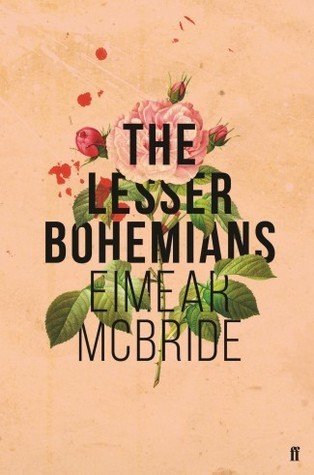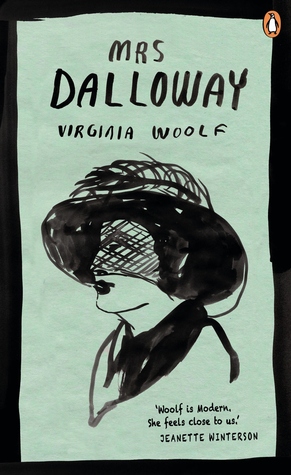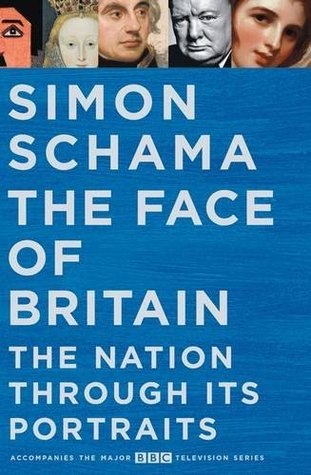Reading Round-Up
Now that my local library has reopened, I'm enjoying catching up with my to-read list. Here's what I've been reading recently:
The Lesser Bohemians by Eimear McBride was one of those books at the back of my mind to read at some point, and I couldn't resist this gorgeous cover.

Eimear McBride's writing style took some getting used to, and I was never fully convinced by what it was achieving. Once I did get used to it, I fell into a comfortable reading rhythm. There is lots to like about this story, which is focused on the first sexual relationship of a young drama student, and there are moments when, writing about raw emotions or physicality, the writing style makes perfect sense. Both characters have a history of abuse, and I was less convinced by the section which simply describes his experiences with abuse and addiction. The Lesser Bohemians is an interesting and engaging story, but I don't think this is an author I will return to.
I had been meaning to read Virginia Woolf for a long time, so I was pleased when I spotted Mrs. Dalloway on the shelves.

I was surprised to discover that Mrs Dalloway doesn't follow its eponymous character through the day on which this novel is set, but instead follows several characters. At first I was excited by this unexpected move between characters, but when I realised that it was the same group of characters we drifted between, my excitement lessened. It remains an interesting idea, and I liked the sense of everydayness which Woolf captures, as well as the way she presents people as ultimately alone, despite their myriad connections. But I wasn't fully convinced by the writing style, which I found a little tiresome. I'm glad to have finally read something by Virginia Woolf, but I didn't enjoy Mrs Dalloway as much as I would have liked to.
My next choice was another classic, The Time Machine by H.G. Wells, which I was curious to read as someone with an interest in science-fiction.

I didn't know what to expect from The Time Machine, and I enjoyed it all the more for it. I enjoyed the crisp style of writing, and I loved the format the story is told in as much as the story itself. Innovative, exciting, and (at only 99 pages) definitely worth a read!
I chose Daisy Jones & The Six by Taylor Jenkins Reid, which I'd heard only good things about, next because I wanted something published a little more recently.

I completely understand why so many people enjoyed Daisy Jones and The Six. It is the story of a fictional, legendary rock band, set in 60s and 70s California, and told through interviews with the surviving band members and their friends/family. The concept of telling a fictional story as if it is non-fiction is one that often appeals to me, and I think the playfulness works really well here. I like the way Taylor Jenkins Reid plays with unreliable narrators, without overdoing it. Daisy Jones and The Six is pure escapism, and I was always reluctant to stop reading.
My next choice was The Haunting of Hill House by the iconic Shirley Jackson, who I had been wanting to read for a while.

I really enjoyed this one. The characters are interesting, the descriptions of the house are fantastic, and I love the creeping menace which builds up throughout this book. I've read ghost stories before, which I couldn't get into because I just found them too unrealistic. I had no such problem with The Haunting of Hill House. Shirley Jackson builds up a fascinating relationship between the main character and the house, so that we're never quite sure who's haunting whom. This is a clever little story, wholly absorbing, and with delightfully comic touches.
I was craving some non-fiction, so my last pick was The Face of Britain: The Nation Through its Portraits by Simon Schama.

The Face of Britain is a collection of short histories, illustrated by portraits from the National Portrait Gallery, and separated into five thematic sections. It reads almost like a guided tour around the gallery. I enjoyed learning more about some immediately recognisable portraits, as well as about some household names in British art. There were also some enjoyable and moving stories about art and artists previously unknown to me. I think that The Face of Britain would have benefitted from more illustrations, especially as paintings are often described which the reader cannot see, and a more coherent structure. Although it is not surprising that a book with such a sweeping title lacks a strong structure and occasionally resorts to generalisations, it is still disappointing in a book of this size. Ultimately I got what I wanted out of this book, but I think that there was definitely more to get out of the source material.
What have you been reading recently?
The Lesser Bohemians by Eimear McBride was one of those books at the back of my mind to read at some point, and I couldn't resist this gorgeous cover.

Eimear McBride's writing style took some getting used to, and I was never fully convinced by what it was achieving. Once I did get used to it, I fell into a comfortable reading rhythm. There is lots to like about this story, which is focused on the first sexual relationship of a young drama student, and there are moments when, writing about raw emotions or physicality, the writing style makes perfect sense. Both characters have a history of abuse, and I was less convinced by the section which simply describes his experiences with abuse and addiction. The Lesser Bohemians is an interesting and engaging story, but I don't think this is an author I will return to.
I had been meaning to read Virginia Woolf for a long time, so I was pleased when I spotted Mrs. Dalloway on the shelves.

I was surprised to discover that Mrs Dalloway doesn't follow its eponymous character through the day on which this novel is set, but instead follows several characters. At first I was excited by this unexpected move between characters, but when I realised that it was the same group of characters we drifted between, my excitement lessened. It remains an interesting idea, and I liked the sense of everydayness which Woolf captures, as well as the way she presents people as ultimately alone, despite their myriad connections. But I wasn't fully convinced by the writing style, which I found a little tiresome. I'm glad to have finally read something by Virginia Woolf, but I didn't enjoy Mrs Dalloway as much as I would have liked to.
My next choice was another classic, The Time Machine by H.G. Wells, which I was curious to read as someone with an interest in science-fiction.

I didn't know what to expect from The Time Machine, and I enjoyed it all the more for it. I enjoyed the crisp style of writing, and I loved the format the story is told in as much as the story itself. Innovative, exciting, and (at only 99 pages) definitely worth a read!
I chose Daisy Jones & The Six by Taylor Jenkins Reid, which I'd heard only good things about, next because I wanted something published a little more recently.

I completely understand why so many people enjoyed Daisy Jones and The Six. It is the story of a fictional, legendary rock band, set in 60s and 70s California, and told through interviews with the surviving band members and their friends/family. The concept of telling a fictional story as if it is non-fiction is one that often appeals to me, and I think the playfulness works really well here. I like the way Taylor Jenkins Reid plays with unreliable narrators, without overdoing it. Daisy Jones and The Six is pure escapism, and I was always reluctant to stop reading.
My next choice was The Haunting of Hill House by the iconic Shirley Jackson, who I had been wanting to read for a while.

I really enjoyed this one. The characters are interesting, the descriptions of the house are fantastic, and I love the creeping menace which builds up throughout this book. I've read ghost stories before, which I couldn't get into because I just found them too unrealistic. I had no such problem with The Haunting of Hill House. Shirley Jackson builds up a fascinating relationship between the main character and the house, so that we're never quite sure who's haunting whom. This is a clever little story, wholly absorbing, and with delightfully comic touches.
I was craving some non-fiction, so my last pick was The Face of Britain: The Nation Through its Portraits by Simon Schama.

The Face of Britain is a collection of short histories, illustrated by portraits from the National Portrait Gallery, and separated into five thematic sections. It reads almost like a guided tour around the gallery. I enjoyed learning more about some immediately recognisable portraits, as well as about some household names in British art. There were also some enjoyable and moving stories about art and artists previously unknown to me. I think that The Face of Britain would have benefitted from more illustrations, especially as paintings are often described which the reader cannot see, and a more coherent structure. Although it is not surprising that a book with such a sweeping title lacks a strong structure and occasionally resorts to generalisations, it is still disappointing in a book of this size. Ultimately I got what I wanted out of this book, but I think that there was definitely more to get out of the source material.
What have you been reading recently?
Published on May 08, 2021 08:54
No comments have been added yet.



